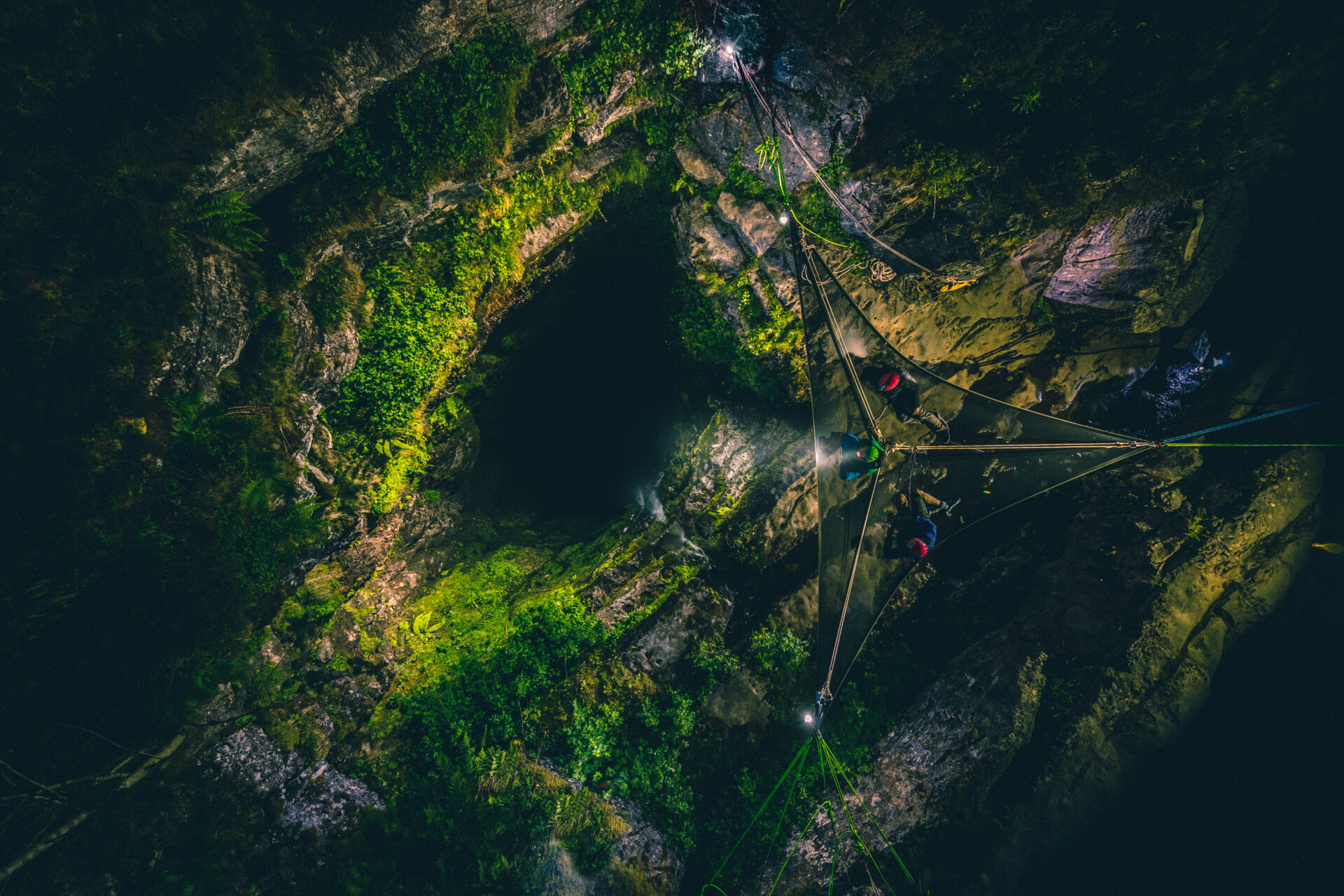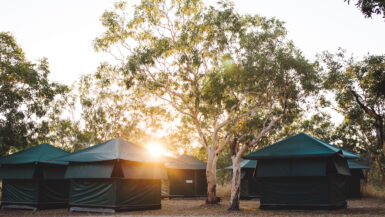Australia is a country that boasts some of the most stunning natural landscapes in the world. From the lush rainforests of Queensland to the rugged outback of Western Australia, there is no shortage of breathtaking scenery to explore. For those who love camping, Australia offers a wealth of opportunities to connect with nature and experience the great outdoors. However, with concerns about the impact of tourism on the environment, it’s important to choose camping sites that prioritize sustainability and eco-friendliness. In this article, we’ll explore some of the best eco-friendly camping sites in Australia that offer a unique and unforgettable camping experience while also minimizing their impact on the environment.
Introduction to Eco-Friendly Camping and Its Benefits
Eco-friendly camping is becoming increasingly popular among nature enthusiasts who want to enjoy the great outdoors while minimizing their impact on the environment. This type of camping involves using sustainable and environmentally friendly practices to reduce waste, conserve energy and water, and protect wildlife and natural habitats.
Eco-friendly camping benefits not only the environment but also the camper. By choosing eco-friendly camping sites, campers can experience a deeper connection with nature, breathe in cleaner air, and enjoy a more peaceful and relaxing camping experience.
Moreover, eco-friendly camping sites often offer unique activities that allow campers to learn about the local ecosystem and wildlife. From guided nature walks to bird watching and wildlife spotting, eco-friendly camping sites provide opportunities to experience nature in a more meaningful way.
In this article, we will explore the top eco-friendly camping sites in Australia, their facilities, activities, and eco-friendly practices. We will also provide tips for eco-friendly camping, including waste management, energy conservation, and water conservation. Finally, we will discuss the importance of supporting eco-friendly camping sites and sustainable tourism and the future of eco-friendly camping in Australia and its impact on the environment.
Top Eco-Friendly Camping Sites in Australia
Australia is home to some of the most beautiful and diverse natural landscapes in the world, and there are many eco-friendly camping sites that allow visitors to experience these wonders while minimizing their environmental impact. Here are some of the top eco-friendly camping sites in Australia:
1. Wilsons Promontory National Park, Victoria
Wilsons Promontory National Park is located on the southernmost tip of mainland Australia and boasts stunning beaches, rugged mountains, and abundant wildlife. The Tidal River campground is the main camping area in the park and offers eco-friendly facilities such as composting toilets and recycling stations. Visitors can enjoy hiking, swimming, fishing, and wildlife spotting in this beautiful park.
2. Freycinet National Park, Tasmania
Freycinet National Park is located on the east coast of Tasmania and features spectacular granite mountains, white sandy beaches, and crystal-clear waters. The eco-friendly campground at the park offers composting toilets, solar-powered showers, and recycling facilities. Visitors can enjoy hiking, kayaking, and wildlife watching in this stunning park.
3. Cathedral Gorge, Western Australia
Cathedral Gorge is a unique natural amphitheater located in the Purnululu National Park in Western Australia. The eco-friendly campground at Cathedral Gorge offers composting toilets, solar-powered showers, and a recycling station. Visitors can explore the ancient rock formations, hike through the gorge, and enjoy stargazing at night.
4. Lamington National Park, Queensland
Lamington National Park is located in the Gold Coast hinterland and is known for its lush rainforest, waterfalls, and stunning views. The eco-friendly camping area at Green Mountains offers composting toilets, recycling facilities, and solar-powered showers. Visitors can enjoy hiking, bird watching, and wildlife spotting in this beautiful park.
5. Cape Range National Park, Western Australia
Cape Range National Park is located on the west coast of Australia and boasts stunning beaches, rugged ranges, and abundant marine life. The eco-friendly camping area at the park offers composting toilets, solar-powered showers, and recycling facilities. Visitors can enjoy snorkeling, swimming, hiking, and wildlife watching in this spectacular park.
These are just a few of the many eco-friendly camping sites in Australia that offer visitors the chance to experience the beauty of nature while minimizing their environmental impact.
Detailed Review of Each Camping Site, Including Facilities, Activities, and Eco-Friendly Practices
Each eco-friendly camping site in Australia has its own unique facilities, activities, and eco-friendly practices that make it a special place to visit. Here is a more detailed review of each camping site:
1. Wilsons Promontory National Park, Victoria
Wilsons Promontory National Park is a popular camping destination for nature lovers, hikers, and beachgoers. The Tidal River campground offers a range of facilities, including hot showers, laundry facilities, and a camp kitchen. The campground also has eco-friendly facilities such as composting toilets and recycling stations.
Visitors can enjoy a range of activities in the park, including hiking, swimming, surfing, fishing, and wildlife spotting. The park is home to a variety of wildlife, including kangaroos, wombats, echidnas, and a variety of bird species.
Eco-friendly practices at Wilsons Promontory National Park include sustainable waste management, energy conservation, and water conservation. The park encourages visitors to minimize their environmental impact by using reusable containers, conserving water, and disposing of waste properly.
2. Freycinet National Park, Tasmania
Freycinet National Park is a stunning natural wonderland that offers visitors the chance to explore beautiful beaches, mountains, and crystal-clear waters. The eco-friendly campground at the park offers composting toilets, solar-powered showers, and recycling facilities.
Visitors can enjoy a range of activities in the park, including hiking, kayaking, and wildlife watching. The park is home to a variety of wildlife, including wallabies, echidnas, and a variety of bird species.
Eco-friendly practices at Freycinet National Park include sustainable waste management, energy conservation, and water conservation. The park encourages visitors to minimize their environmental impact by using reusable containers, conserving water, and disposing of waste properly.
3. Cathedral Gorge, Western Australia
Cathedral Gorge is a unique natural amphitheater that offers visitors the chance to explore ancient rock formations and stunning landscapes. The eco-friendly campground at Cathedral Gorge offers composting toilets, solar-powered showers, and a recycling station.
Visitors can enjoy hiking through the gorge, exploring the surrounding landscape, and stargazing at night. The park is home to a variety of wildlife, including rock wallabies and a variety of bird species.
Eco-friendly practices at Cathedral Gorge include sustainable waste management, energy conservation, and water conservation. The park encourages visitors to minimize their environmental impact by using reusable containers, conserving water, and disposing of waste properly.
4. Lamington National Park, Queensland
Lamington National Park is a beautiful rainforest park that offers visitors the chance to explore lush rainforests, waterfalls, and stunning views. The eco-friendly camping area at Green Mountains offers composting toilets, recycling facilities, and solar-powered showers.
Visitors can enjoy a range of activities in the park, including hiking, bird watching, and wildlife spotting. The park is home to a variety of wildlife, including pademelons, wallabies, and a variety of bird species.
Eco-friendly practices at Lamington National Park include sustainable waste management, energy conservation, and water conservation. The park encourages visitors to minimize their environmental impact by using reusable containers, conserving water, and disposing of waste properly.
5. Cape Range National Park, Western Australia
Cape Range National Park is a stunning coastal park that offers visitors the chance to explore beautiful beaches, rugged ranges, and abundant marine life. The eco-friendly camping area at the park offers composting toilets, solar-powered showers, and recycling facilities.
Visitors can enjoy a range of activities in the park, including snorkeling, swimming, hiking, and wildlife watching. The park is home to a variety of wildlife, including emus, kangaroos, and a variety of marine species.
Eco-friendly practices at Cape Range National Park include sustainable waste management, energy conservation, and water conservation. The park encourages visitors to minimize their environmental impact by using reusable containers, conserving water, and disposing of waste properly.
Tips for Eco-Friendly Camping, Including Waste Management, Energy Conservation, and Water Conservation
Eco-friendly camping is all about minimizing your environmental impact while enjoying the beauty of nature. Here are some tips for eco-friendly camping:
1. Waste Management
When camping, it is important to properly dispose of waste to minimize your impact on the environment. Here are some tips:
– Bring reusable containers and utensils to reduce waste
– Separate recyclables from non-recyclables and dispose of them properly
– Use composting toilets or bury human waste at least 100 meters from water sources
– Pack out all trash and dispose of it properly
2. Energy Conservation
Conserving energy while camping can reduce your impact on the environment and help you save money on camping fees. Here are some tips:
– Use solar-powered or rechargeable devices instead of disposable batteries
– Use energy-efficient LED lights instead of traditional incandescent bulbs
– Turn off lights and devices when not in use
– Use a camp stove instead of a campfire to reduce wood consumption
3. Water Conservation
Water is a precious resource, especially in dry camping areas. Here are some tips for conserving water:
– Bring a water filtration system or purification tablets to avoid buying bottled water
– Take short showers and turn off the water when washing dishes or brushing teeth
– Collect rainwater for washing dishes or other non-drinking uses
– Use a bucket to collect greywater and dispose of it properly
By following these tips, you can minimize your environmental impact and enjoy a more sustainable camping experience.
Importance of Supporting Eco-Friendly Camping Sites and Sustainable Tourism
Eco-friendly camping sites and sustainable tourism are essential for protecting the environment and preserving natural habitats for future generations. Here are some reasons why supporting eco-friendly camping sites and sustainable tourism is important:
1. Protecting the Environment
Eco-friendly camping sites and sustainable tourism practices help to minimize the impact of tourism on the environment. By reducing waste, conserving energy and water, and protecting wildlife and natural habitats, we can preserve the natural beauty of our planet.
2. Supporting Local Communities
Eco-friendly camping sites and sustainable tourism practices also support local communities by promoting responsible tourism. By choosing eco-friendly camping sites, we can support local businesses and help to create jobs in the tourism industry.
3. Setting an Example
By supporting eco-friendly camping sites and sustainable tourism practices, we can set an example for others to follow. By demonstrating the importance of responsible tourism, we can encourage others to adopt eco-friendly practices and help to protect the environment.
4. Supporting Conservation Efforts
Many eco-friendly camping sites and sustainable tourism practices also support conservation efforts by donating a portion of their profits to conservation organizations or by participating in conservation projects.
By supporting eco-friendly camping sites and sustainable tourism practices, we can help to protect the environment, support local communities, set an example for others, and support conservation efforts. It is important to choose eco-friendly camping sites and practice sustainable tourism whenever possible to ensure a sustainable future for our planet.
Future of Eco-Friendly Camping in Australia and its Impact on the Environment
Eco-friendly camping has gained immense popularity in recent years, and its future in Australia looks promising. With the increasing awareness about environmental conservation and sustainable tourism, more and more people are choosing eco-friendly camping sites for their next trip. This shift towards responsible tourism is not only beneficial for the environment but also for the local communities and economies.
As the demand for eco-friendly camping sites continues to grow, it is expected that more campsites will adopt sustainable practices and reduce their carbon footprint. This will not only benefit the environment but also enhance the camping experience for visitors.
One of the most significant impacts of eco-friendly camping is the reduction of waste. Many camping sites have implemented recycling programs and encourage visitors to bring reusable items such as water bottles, utensils, and bags. This helps to minimize the amount of waste generated and promotes sustainable living.
Another impact of eco-friendly camping is the conservation of energy and water. Many camping sites use solar power and rainwater harvesting systems to reduce their reliance on fossil fuels and municipal water supplies. This not only saves money but also helps to conserve natural resources.
Eco-friendly camping also has a positive impact on local communities. Many camping sites source their food and supplies locally, which supports small businesses and reduces the carbon footprint of transportation. Additionally, some camping sites offer educational programs and volunteer opportunities to engage visitors in environmental conservation efforts.
Overall, the future of eco-friendly camping in Australia looks bright. With more people choosing sustainable tourism options, camping sites will continue to adopt environmentally friendly practices and reduce their impact on the environment. By choosing eco-friendly camping sites for your next trip, you can not only enjoy the beauty of nature but also contribute to its conservation.
Conclusion and Call to Action for Readers to Choose Eco-Friendly Camping Sites for their Next Trip
Choosing an eco-friendly camping site for your next trip is not only a responsible choice but also a rewarding one. You can enjoy the beauty of nature while contributing to its conservation and supporting local communities.
Throughout this article, we have explored some of the best eco-friendly camping sites in Australia. From the stunning beaches of New South Wales to the picturesque forests of Tasmania, these camping sites offer a range of facilities and activities while prioritizing sustainable practices.
By choosing an eco-friendly camping site, you can reduce your impact on the environment by following waste management, energy conservation, and water conservation practices. You can also learn more about environmental conservation efforts and engage in volunteer opportunities.
Supporting eco-friendly camping sites and sustainable tourism is essential for the protection of our planet and its natural resources. By choosing to camp responsibly, we can minimize our impact on the environment and preserve it for future generations.
So, next time you plan a camping trip, consider choosing an eco-friendly camping site. You can make a difference while enjoying the beauty of nature.





Leave a reply